Art World
Stefania Bortolami on How Smaller Galleries Can Innovate to Survive the Age of the Mega-Gallery
The Italian dealer is experimenting with new models, and other gallerists might want to pay attention.
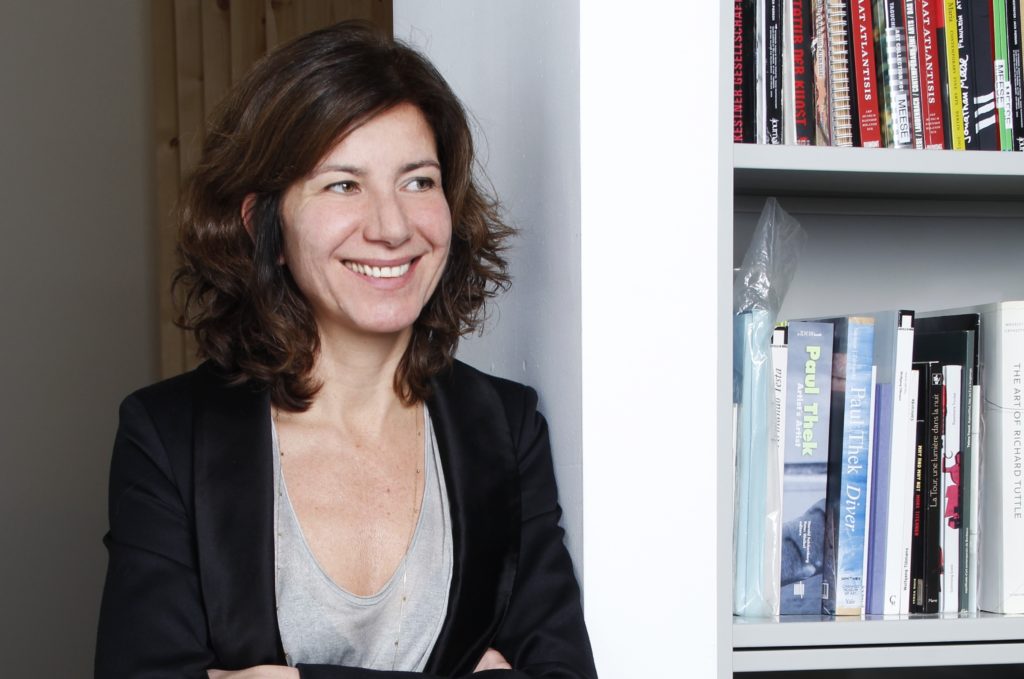
The Italian dealer is experimenting with new models, and other gallerists might want to pay attention.

Henri Neuendorf

In an industry that is notoriously slow to innovate, Stefania Bortolami isn’t resting on her laurels. In the shadow of international mega-galleries, the Italian-born gallerist is carving out a innovative niche for herself with her new gallery space in Manhattan’s Tribeca, where she fosters an engaging program of promising emerging and established mid-career artists.
While Bortolami’s newly opened 9,000-square-foot gallery is as beautiful as it is impressive, ironically it is the work that she’s doing outside of that space that’s really changing the game. Under her ongoing Artist/City project, the dealer is bringing long-term contemporary art exhibitions to unlikely locations in the American heartland. Current shows include a yearlong exhibition by gallery artist Eric Wesley housed in a former Taco Bell restaurant in St. Louis, Missouri, and Tom Burr’s exhibition in an abandoned brutalist office building in New Haven, Connecticut.
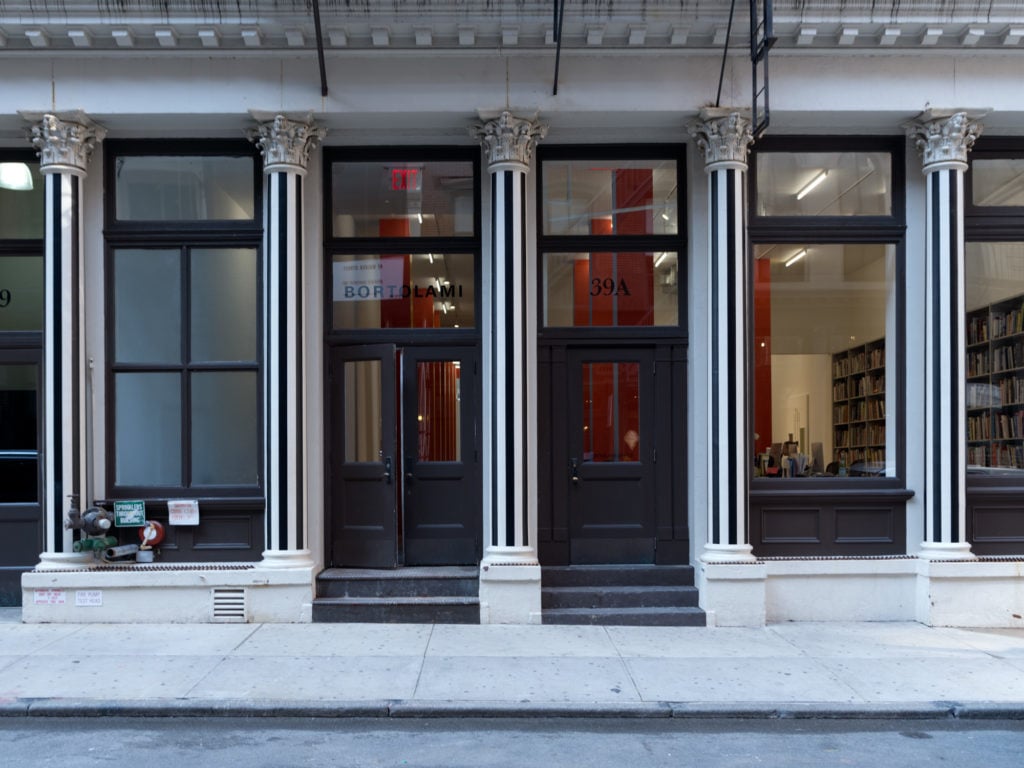
Bortolami Gallery. Photo: Courtesy of Bortolami, New York.
Having learned her trade at London’s Anthony d’Offay and from international power player Larry Gagosian, Bortolami embodies the aesthetic rigor of the former and the market pragmatism of the latter. Indeed, over the course of our conversation, Bortolami speaks with refreshing candor, far from the veiled idioms of most of her colleagues. Surrounded by carefully packed artworks in the underground storage facility of her Tribeca gallery, we talked about her discovery of contemporary art, why she’s glad to leave Chelsea behind, and whether or not the future of the mid-size gallery lies outside of its primary space.
You studied 16th-century Venetian art at the University of Turin. How did you go from that to running a contemporary art gallery?
Oh my god! I went to London to continue my studies and it was an exciting time in London in the late ’80s and early ’90s. There were all the YBAs [Young British Artists] working, and there was definitely an energy. I got to know some of the artists, and I fell in love with contemporary art and realized that it clearly is the future.
You’ve been described you as the female Larry Gagosian. Is that an accurate comparison in your view?
No, not at all. I’m doing something else. He’s an alpha male, and I’m not.
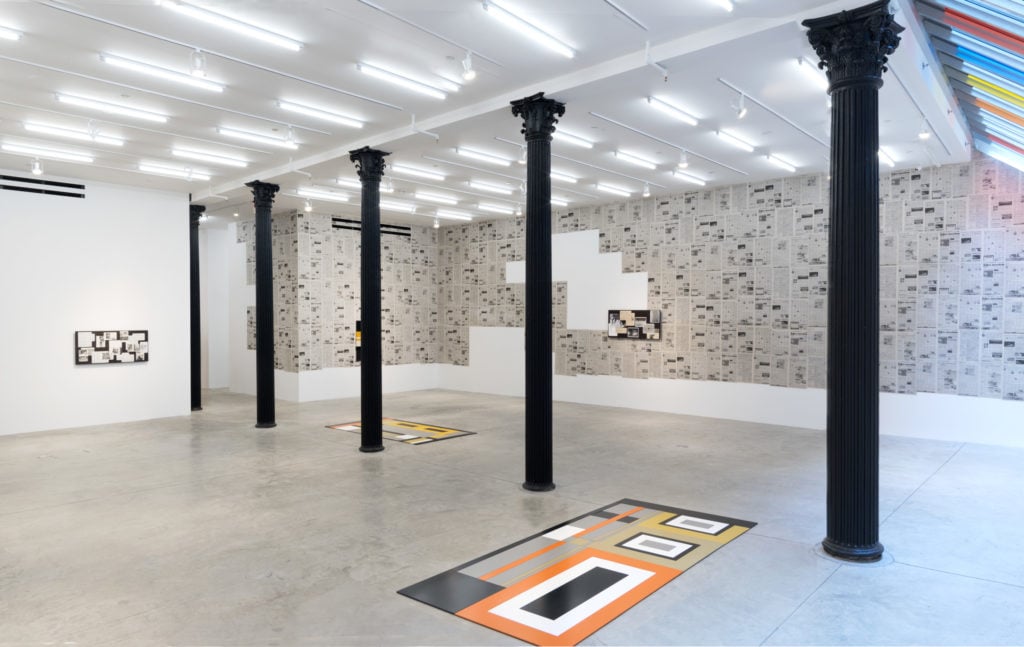
Tom Burr and Andrea Zittel Concrete Realities (2017), installation view. Photo: courtesy of Bortolami, New York.
But you did work at Gagosian for seven years.
I did work there for almost seven years, and it was great. Larry is very focused on monetary success. It sounds derogatory, but I think he’s incredible and fantastic, and thank god he exists because he really brought a new dimension to the art world. But I don’t have the same ambition that Larry has. I want to create fantastic exhibitions and create a cultural experience, and hopefully create a little cultural capital and live well in the meantime. I don’t want a 100-foot boat—although, I mean if someone gave it to me I wouldn’t say no.
You recently moved your gallery from Chelsea to Tribeca. Was this a logistical or strategic decision?
Well, I had to move from my space, so I met with a real estate agent and he came to me with a pile of spaces. I wanted to pay more or less the same amount of money that I was paying, and he showed me spaces in Chelsea, Harlem, and Midtown that were not what I was looking for. And then he showed me a picture of this space. The picture was very different [from seeing it firsthand]. The space required a total gut renovation. It looked terrible. But I fell in love.
This is the first space we came to see, and it happened to be in Tribeca. And when I thought about it, it made sense. It’s not the Lower East Side, which is a bit crowded. Tribeca has plenty of beautiful homes with lots of walls—walls that will need things on them—and plenty of new construction happening nearby. It’s very easy to reach by subway from the East, West, and Brooklyn. It’s got the history of all the artists living in the neighborhood, and it has a little bit of the nostalgia of SoHo. So for me it ticked all the right boxes.
I was quite happy to be out of Chelsea, to tell you the truth. Chelsea is going in a specific direction, which is luxury—in terms of both the condo and office developments—and then the mega-galleries are picking up more and more real estate. A gallery like mine will not be able to compete in terms of space, and I don’t want to. So it felt like it was not the right spot for me anymore.
Artist/City is one of the most interesting new concepts in the gallery world. What were you trying to achieve with this initiative? And what has the response been so far?
What I was trying to do was find a way to slow down the art world because everything is very fast. Artists’ careers go up and down super fast, prices go up fast, and there are so many art fairs—and the fairs are getting shorter and shorter, sometimes only three or four days. There are shows that are super short, too. There’s a bulimic attitude toward art, and maybe it’s because I’m getting older, but I wanted to slow it all down.
The first thing I did was I bought a domain, slowartmovement.com, and at first I didn’t know what to do with it. Then I started talking to the artists, and one of the things that came out of those conversations is that the exhibitions at the gallery are also too fast.
In a gallery in New York City the cost of real estate is so high that there’s a lot of pressure to show everything done-up and ready to be consumed, and there’s less and less space for experimentation. So I thought, if I find real estate that is not expensive all across the United States of America—and there is so much—maybe I can take it for a year, the minimum period for a lease, and give it to the artists to do a project.

Daniel Buren Photo-souvenir: Daniel Buren/Miami, Phase 2, 2016 Bortolami, Miami Installation view. Photo: Courtesy of the artist and Bortolami, New York.
Then we started thinking about how to choose the cities, because it seemed a little bit silly to just randomly pair an artist with a city. The first edition with Daniel Buren in Miami was more of a coincidence. It was during the Miami art fair, and his stripe turned 50. The first painting he did with the famous stripes was in December 1965, which also happened to be when I was born—I was turning 50 too—and it seemed like the right time to do it.
Eric Wesley came to me with the idea of using an Taco Bell space in St. Louis, and things started to come together beautifully and serendipitously.
It grew very organically, we didn’t start with a business plan or an idea about what it was, and we still don’t have one. Every time it’s very different. For artist Ann-Veronica Janssens we’re not even going to use a space. She’s planning on doing light interventions into abandoned buildings. So every time it’s really different.
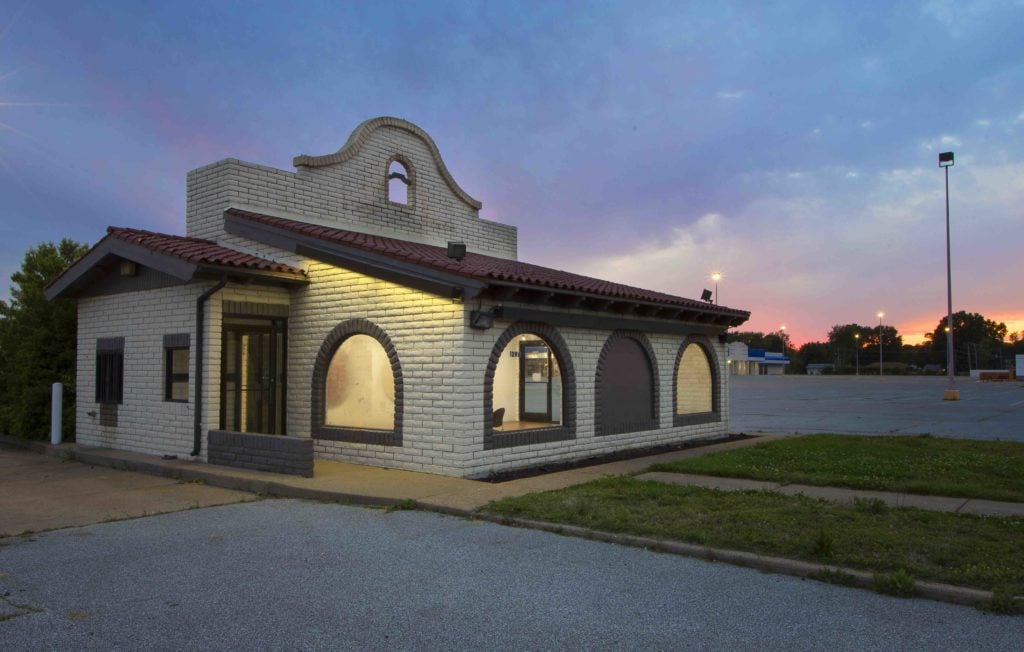
Eric Wesley/St. Louis, Phase 1, 2016 Bortolami, Cahokia, Installation view. Photo: Courtesy of the artist and Bortolami, New York.
How many Artist/City projects have you done so far?
Two are finished [Eric Wesley in St. Louis and Daniel Buren in Miami], the third one is happening now in New Haven with Tom Burr, and then we have one starting in the fall—Ann Veronica Janssens in Baltimore—then there is Jutta Koether starting in December. And then next year we are doing two more with Cecily Brown in Greenville S.C., and Paul Pfeiffer in Atlanta. We also expanded it to artists we do not work with, friends of the gallery, because why not?
Has it worked so far? It has. The first one we sold to three museums and private collectors, that was Daniel Buren in Miami. Different works that were sold at different stages of the year. For Eric Wesley, the whole project is coming to the Red Bull Arts New York. We sold a little bit here and there, but the main success was him getting a show at Red Bull studios. And for Tom Burr, we’ll see.
The idea for me is to try and make them [these projects] not financially burdensome, so it would be nice to sell enough from each project so that we can continue with the next one.
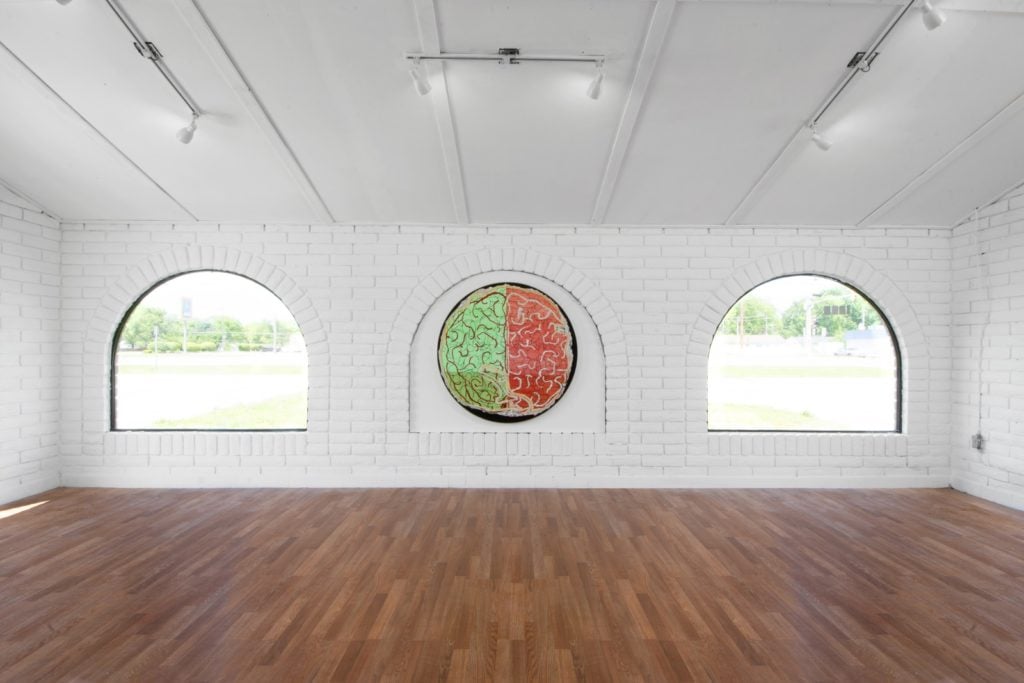
Eric Wesley / St. Louis, Phase 1, 2016 Bortolami, Cahokia, Installation view. Photo: Courtesy of the artist and Bortolami, New York.
Do you think the idea of taking exhibitions outside of the gallery will become more prevalent? How do you see the development of the gallery model in the future?
The one development that has come up in the last 15 years is the multinational gallery. So that’s the current model. If you have ambition and money you’re going to expand internationally. And yes it does eat up territory of existing galleries. It’s not very good for the small, non-multinational boutique gallery.
As I said, I don’t have any intention to open in London, Hong Kong, or even Rome where I’m from. I think that this approach is very flexible. It doesn’t tie you down to one place, but you can go wherever you want. So if I do want to do something in New Delhi, I can do it. For now it’s only in American cities because it’s easier. There’s no customs, transport is relatively cheap, we just have to open an LLC for a year and it takes $5 online—end of story. Whereas doing something in New Delhi would require getting to know the local laws and all that. But I have the ambition to see it grow, and maybe one day to have it as a separate part of the gallery, maybe even with a separate office and tax ID and do things in a different way.

Tom Burr/New Haven, Phase 1, 2017, installation view, Bortolami, New Haven. Courtesy of the artist and Bortolami, New York.
Do you think this is something that will catch on? What has the feedback been from other gallerists and artists?
Oh, artists love it. The feedback from artists has been fantastic, from both artists I work with and others I do not. With other gallerists, I don’t know. Some have told me that they like it. Do you mean is everyone going to copy me?
Yes.
I don’t know, maybe. Hopefully not! It certainly is a way of expanding without picking up huge expenses.
Is the current art-fair model sustainable? How can mid-sized galleries such as yours compete with the pressures of attendance weighed against the rising costs?
I can’t tell you how many times I’ve been asked this question in the last year or so. There are galleries closing almost every day. Unfortunately it’s very sad.
I read this article about how a very small number of food companies control all of the food that is sold all over the world—and we’re taking about 10 companies controlling 90 percent of food sales. The art market is going a little bit into this direction. There are six or seven galleries that just eat up everything. If you go to Venice it’s crazy—half of it has been paid for and sold by Hauser & Wirth. This is extraordinary. But I’m happy to offer the other side. You can’t just have 10 multinational galleries controlling everything. It’s just not healthy. That’s the way it’s going, but there’s still space for the boutique, “farm-to-table” galleries.

Tom Burr / New Haven, Phase 1, 2017, installation view, Bortolami, New Haven. Photo: Courtesy of the artist and Bortolami, New York.
There’s also this idea that your project acts counter to the mainstream and commerical art world. Artist/City seems to offer an alternative.
It’s not about being commercial, there’s nothing wrong with that. I need to sell too. We’re all commercial galleries.
How is the model of today’s gallery system—in which art is increasingly sold outside of the gallery either via the Internet or at art fairs—impacting the artists? Have your artists voiced concerns? How are they reacting?
If you look through art catalogues from the 20th century, you’ll see artworks that were part of important shows, for example, at the Ferus Gallery in Los Angeles in 1965. Provenance is important. Exhibitions are important. They need to happen so that artworks are created for them. Which good artist is going to say, “No worries I’m just going to make work for your art fair”? I don’t think that artists of a certain stature would say yes to making works just for Basel. There are certain artists that might do it, but we can’t just live with those. I talked earlier about cultural capital. The artists need to be given the opportunity to create cultural capital and not just monetary capital. Artists that are interested in creating cultural capital are the ones that we will remember or have a better chance of being remembered in 50 years, I think.
And don’t get me wrong. Although people like Jeff Koons and Damien Hirst are very interested in creating monetary capital they’ve created plenty of cultural capital already, especially Jeff. If you look at his work up until 10 years ago, it’s incredible.
And that’s another thing. I think there is a time and a moment for an artist to say, okay that’s enough I want to make some money. I did all these incredible things and it’s time to start selling it. And if the collectors want 20 Nurse Paintings, I’m going to make them 20 Nurse Paintings. But you can’t start doing that when you’re in your 20s, 30s, or 40s. You have to first create the cultural capital and then start selling it.
Do you think the same could be said for the galleries?
Maybe! So maybe I’ll make lots of money if that is true. (laughter) That would be fun! Maybe that is true, but I don’t think about it that way.